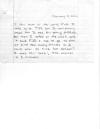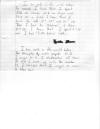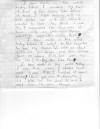Math in the World: Introductory Lesson
Aim: How is math used in the real world?
Objective: Students will discover ways in which we use mathematical concepts in every part of our daily lives.
Materials: Internet
Do Now: Teacher will ask students to “quickwrite” an answer to this question—
Besides during math time, when did you use math today or yesterday?
Teacher will give students about 5 minutes to answer this question. When students finish writing, they can share answers aloud.
Procedure: On the chalkboard, Teacher will create a web. She will draw a circle with the phrase, “Math in the World” in the middle. Students will share how they see math in the world.
Useful prompts:
Where do we see math in the world?
How is math used at the grocery store? A restaurant? The movies?
What mathematical shapes do we see in the world?
How does time play a part in our every day lives?
When you look at a calendar, are you using math?
When you cook or bake, do you use math?
How is math used in sports?
Do you use math when you travel in a car? On the subway?
Teacher will explain that the class will examine how mathematical concepts are used in almost every aspect of our everyday lives.
Activity: In small groups, students will check out these websites and play the “real-life” math games.
http://fema.gov/kids/dizmath.htm
The Federal Emergency Management Agency offers real-life word problems that students can answer for immediate scoring. This URL will take you directly to “Disaster Math” where kids can see how earthquakes, tornadoes, and other disasters can also be a mathematical challenge.
http://kn.pacbell.com/wired/baseball/
“Math, Baseball, and the San Francisco Giants” shows different ways that math is used in the game of baseball. This site offers activities based on batting statistics, game attendance, player salaries, and more.
http://school.discovery.com/homeworkhelp/webmath/realworld.html
Discoveryschool.com is an invaluable site for student-centered activities across the curriculum. The site has excellent explanations for several mathematical concepts. The URL provided will take you to “Real World Problems” where students can calculate the cost of sale items, count coins, or even try the stock market
Assessment: Formally, Teacher will assess the answers to the “Do Now” questions. Informally, Teacher will assess oral contributions and group participation.
Follow-Up: Each day, students can write up a short paragraph of how they see math in the world. In a group circle, the students can share how they see math in the world. The class can also create a “Math: It’s Everywhere!” book where they put their entries each day.
Sample Student Work (Click on the Thumbnail to enlarge the photo)



For more information, please contact
April Paine at april_paine@hotmail.com |